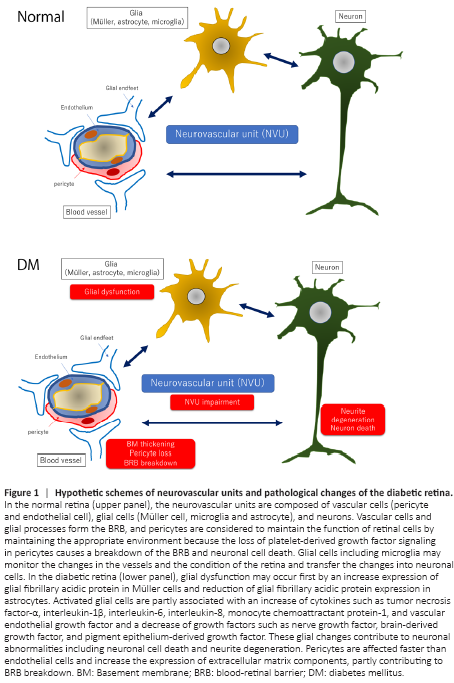视神经损伤
-
Figure 1|Hypothetic schemes of neurovascular units and pathological changes of the diabetic retina.

It is well known that diabetic retinopathy is a neurovascular disease that is accompanied by dysfunction of neurovascular units composed of neurons, glial cells, and vascular cells (Antonetti et al., 2012; Figure 1). Many studies have reported that the neuronal abnormalities, such as neuronal cell death, frequently precedes vascular abnormalities including neovascularization (Sohn et al., 2016). Neuronal cell death and axonal degeneration are irreversible changes under normal physiological conditions, and they are directly linked to the vision decrease. In fact, there is a reduction of the thickness of retinal nerve fiber layer in patients without diabetic retinopathy (Sohn et al., 2016). The reduction in the thickness of the ganglion cell complex, which is made up of the retinal nerve fiber layer, ganglion cell layer, and inner plexiform layer, is 0.54 μm/year which is similar to the reduction observed in advanced glaucoma (Sohn et al., 2016). These clinical findings strongly indicated that the axonal degeneration is associated with the pathogenesis of neuronal abnormalities in diabetic retinas. Thus, not only neuroprotection but also regenerative therapies are required for the protection and maintenance of visual function of eyes with diabetic retinopathy.